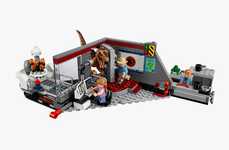



Storytelling mediums are being adapted with the use of VR and other tech
Implications - While visual art, cinematography and graphic design are all traditional modes of conveying a story and message, modern technology is adapting to these mediums by integrating AR and other digital tools into the mix. From comic books that offer a virtual 360 experience to books that utilize voice-control capabilities, these adaptations showcase how traditional storytelling mediums are adapting to be not only more high-tech but also experiential in nature.
Workshop Question - What technological tools could you utilize to add more storytelling elements to your brand or services?
Trend Themes
1. Experiential Storytelling - Traditional storytelling mediums are adapting to be more high-tech and experiential in nature through the integration of AR and other digital tools.
2. Voice-controlled Storytelling - The need for more personalized ways to connect in an increasingly digital world has resulted in the development of apps that allow users to craft and share personal stories, connecting like-minded individuals.
3. Dynamic VR Comics - The blending of 3D-rendered anime with virtual reality is creating new opportunities for creating immersive and interactive manga experiences.
Industry Implications
1. Travel - The travel industry has the opportunity to offer virtual reality experiences to its customers, providing immersive travel experiences to destinations far-off, foreign or entirely fantastical.
2. Entertainment - The entertainment industry has the potential to create innovative and interactive experiences that utilize the power of virtual and augmented reality, bridging the gap between traditional media and technology.
3. Technology - The technology industry can continue to push the boundaries of virtual and augmented reality, investing in storytelling innovations that offer immersive and interactive experiences to users in various settings.

























































